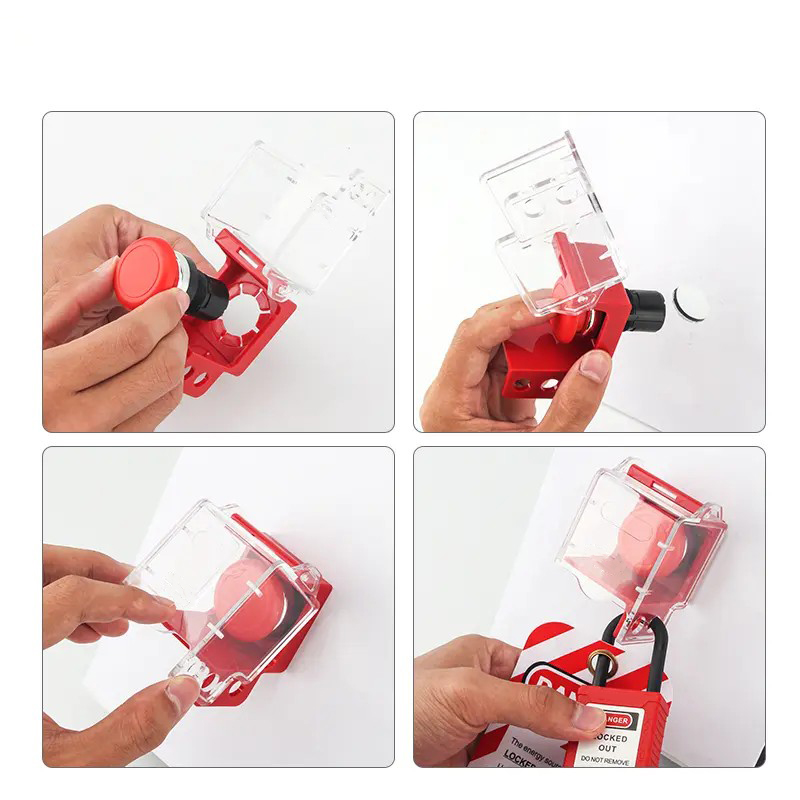When it comes to protecting workers during equipment maintenance or repair, machine-specific lockout/tagout (LOTO) procedures are essential. These procedures go beyond general safety rules, offering detailed, step-by-step guidance for isolating each machine’s unique energy sources. Without them, even a well-trained team may face risks from residual energy or unclear shutdown processes.
Machine-specific lockout/tagout procedures are written instructions that describe exactly how to isolate and control hazardous energy for a particular machine. Unlike generic LOTO programs, these procedures identify the exact energy sources, the type of isolation devices required, and the sequence of actions to safely de-energize the equipment.
Each procedure typically includes:
By customizing LOTO procedures for each machine, employers can significantly reduce the chance of human error and ensure that every worker knows exactly how to perform safe maintenance.

Generic LOTO procedures may seem convenient, but they often lack the specific details necessary for real safety. Machines differ in design, energy systems, and control mechanisms. A one-size-fits-all document can’t capture those differences.
When workers rely on vague or incomplete instructions, they may skip steps or isolate only part of a system. This can lead to serious accidents and OSHA violations. According to OSHA’s 29 CFR 1910.147 standard, employers must provide procedures that “clearly and specifically identify the steps for shutting down, isolating, blocking, and securing machines.”
Therefore, machine-specific lockout/tagout procedures are not only best practice—they’re a regulatory requirement. Following them helps organizations improve compliance, reduce downtime, and protect both workers and assets.
A strong machine-specific LOTO program is built on several essential elements that make it both effective and compliant:
Start by listing all machines and assigning each a unique ID and physical location. This helps avoid confusion, especially in large facilities with multiple similar machines.
Identify every form of hazardous energy the machine uses or stores—such as electrical, pneumatic, hydraulic, thermal, or gravitational. Note the magnitude of each energy source (e.g., 480 volts, 100 psi).
Document the exact shutdown process, including how to switch off, isolate, and secure each energy source. For example, “turn the disconnect switch to OFF and apply a padlock” or “close the main air valve and attach a valve lockout device.”
List the steps needed to release or control any residual energy, such as bleeding air pressure, discharging capacitors, or lowering mechanical components.
Before any work begins, workers must verify that the isolation was successful—such as by pressing the “start” button to confirm the equipment does not power up.
Including photos or diagrams of isolation points helps workers quickly recognize energy sources and lockout locations. This is especially valuable in multilingual workplaces.

To create effective procedures, employers should follow a structured process.
Inspect each machine directly. Record its name, model, location, and all energy sources. Include both primary and secondary sources, such as hydraulic pressure or stored spring tension.
Using the collected data, prepare a clear, step-by-step document for isolating the machine. Each step should be specific and easy to follow. Many organizations use templates to ensure consistency and to integrate photo references.
Make sure the written procedure is posted near the machine or stored digitally in an easily accessible system. Workers should be able to find and review it before performing maintenance.
Provide detailed training for authorized employees who perform lockout and for affected employees who work near the equipment. Clear training helps ensure that every worker understands their role in the LOTO process.
Whenever new equipment is added or existing systems are modified, review and update all related LOTO procedures to maintain accuracy.
Even with good intentions, companies sometimes make mistakes that lead to noncompliance. The most common include:
The best way to avoid these issues is to standardize and audit your machine-specific LOTO documentation regularly. Using visual aids and checklists also helps ensure that every isolation step is completed safely and consistently.
A machine-specific lockout/tagout program is not a one-time project—it requires continuous attention. Regular periodic inspections (as required by OSHA 1910.147(c)(6)) verify that workers are following each step and that procedures remain effective.
Employers should also document inspection results, including:
By maintaining complete and accurate records, you demonstrate compliance and foster a culture of safety awareness throughout your facility.
Ultimately, machine-specific LOTO procedures are about precision and protection. They give workers confidence, reduce accidents, and keep companies compliant with safety regulations. A clear, detailed, and accessible lockout/tagout program saves time, prevents injuries, and strengthens overall operational safety.
For workplaces looking to improve their lockout/tagout systems, partnering with a trusted safety equipment supplier is key.
ELECPOPULAR SAFETY provides a full range of lockout/tagout devices, including durable lockout padlocks, valve lockouts, cable lockouts, and tagout kits designed for reliable performance in industrial environments. With our professional safety solutions, you can establish a compliant and efficient machine-specific lockout/tagout program that protects your people and your business.
Enhance your workplace safety today with ELECPOPULAR SAFETY — your reliable partner for complete Lockout Tagout solutions.
